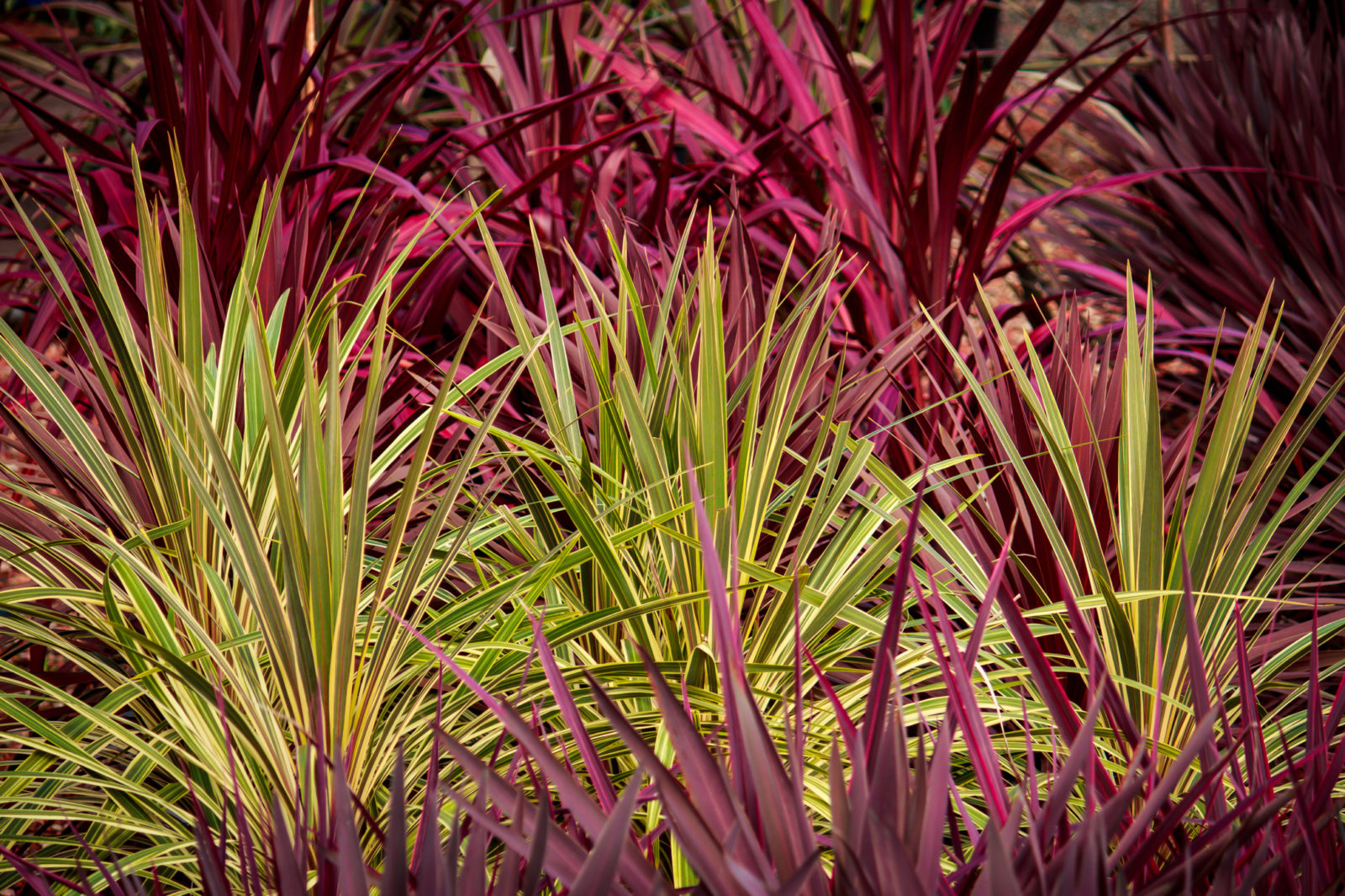SHRUBS > CORDYLINE > VARIETIES
Reviewed By PETER LICKORISH

Peter is a Horticulture Lecturer and self-employed Horticulturist, with a passion for diverse areas of the industry - from garden design to the science behind plant growth and propagation. He has completed the Royal Horticultural Society’s Master of Horticulture (MHort) Award and lectures on RHS courses at Bedford College.
IN THIS GUIDE
- 1) C. australis
- 2) C. indivisa
- 3) C. australis ‘Atropurpurea’
- 4) C. australis ‘Red Star’
- 5) C. australis ‘Torbay Dazzler’
- 6) C. australis ‘Albertii’
- 7) C. ‘Southern Splendour’
- 8) C. australis ‘Red Sensation’
- 9) C. fruticosa ‘Red Edge’
- 10) C. ‘Cha Cha’
- 11) C. fruticosa ‘Kiwi’
- 12) C. fruticosa ‘New Guinea Black’
- 13) C. fruticosa ‘Amabilis’
- 14) C. fruticosa ‘Rumba’
- 15) C. fruticosa ‘Firebrand’
- 16) C. banksii ‘Electric Pink’
- 17) C. petiolaris
- 18) C. congesta
- References
CORDYLINE GUIDES
Container Growing
Leaves Changing Colour
Overwintering
Propagation
Pruning
Revival
Varieties
Though cordylines are denizens of temperate and subtropical locales, they are very much at home in many regions of the UK where they are valued for their richly-hued evergreen foliage.
Most cordylines come in cool tones and restrained hues and even the reds and purples are of bronzy or slate shades rather than vivid ones.
Where the outdoor cordylines are concerned, these evergreens, whose coloured sword-shaped leaves are the main attraction, produce lots of tiny flowers in blush white, cream, or yellow.
Cordyline houseplants, more reserved and more foliage-centric, do not produce flowers.
However, the random variegation, gradations, and colour shifts of their leaves more than compensate.
“When choosing a Cordyline, you should first decide whether you would like to grow it solely outdoors, outdoors over the summer months or as a houseplant,” says Peter Lickorish, a Lecturer in Horticulture.

“Cordyline fruticosa is a houseplant species, not suited to planting outdoors, and many of the more brightly coloured Cordylines of other species prefer being brought indoors over winter.
“In my experience, the species C. australis is the hardiest.
“The more hardy varieties also tend to produce a solid trunk below the foliage, whereas I find this happens less often or more slowly with coloured leaf cultivars, so think about your long-term hopes for the plant.
“Consider whether you want a lower-growing conical plant or a tree shape.”
Underneath we introduce eighteen amazing cordyline varieties that are evenly split between the larger varieties that are effectively small trees and the smaller ones that make vibrant houseplants.
1) C. australis
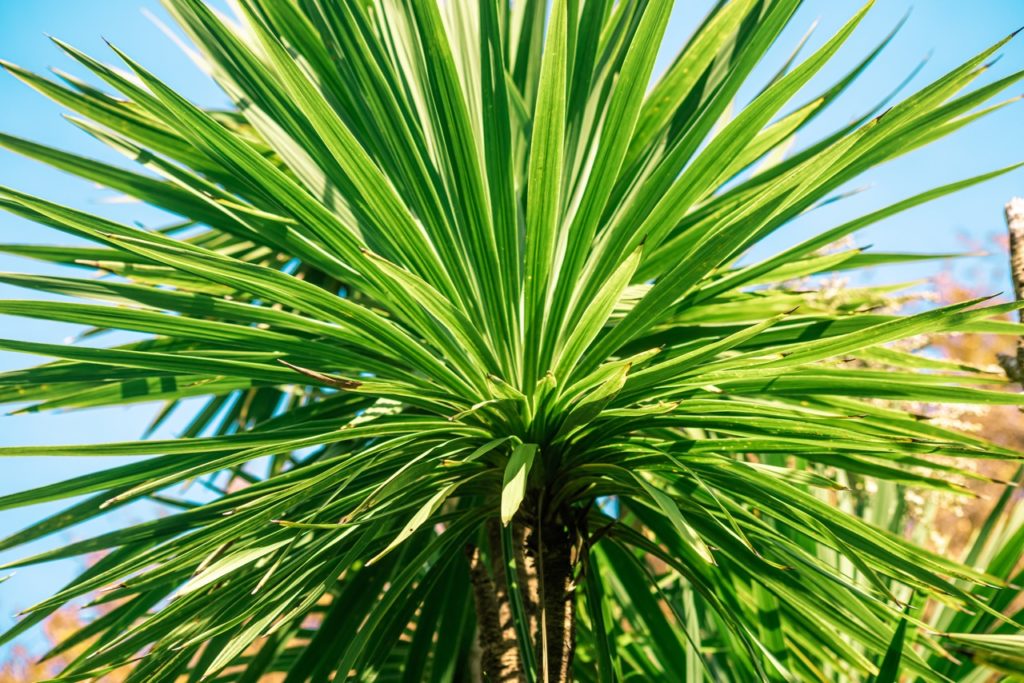
- COMMON NAME(S): cabbage palm
- FOLIAGE: green
- FLOWERS: cream and white
- FLOWERING SEASON(S): summer
- SIZE: 4-8m in height, 2.5-4m spread
The species plant, Cordyline australis is not a glamour cultivar but it is the original model.
It can attain the greatest heights, up to 6m and more, though members in the wild have grown considerably taller, and it is also hardier than its rating of H3 suggests.
The sword-shaped leaves are stiff and erect and are a lovely shade of sea green.
This tree has a proper trunk instead of a stem and its leaves could be mistaken for green scimitars.
In summer, the species produces dense sprays of tiny white flowers, which bees adore.
Back home in New Zealand, it has long been of much cultural significance to the indigenous Maori People.1Part VIII — The Genus Cordyline. (n.d.). Maori Agriculture. Retrieved March 14, 2023, from https://nzetc.victoria.ac.nz/tm/scholarly/tei-BesAgri-t1-body-d8.html
The Cabbage Tree and its cultivars are grown throughout Europe.
2) C. indivisa
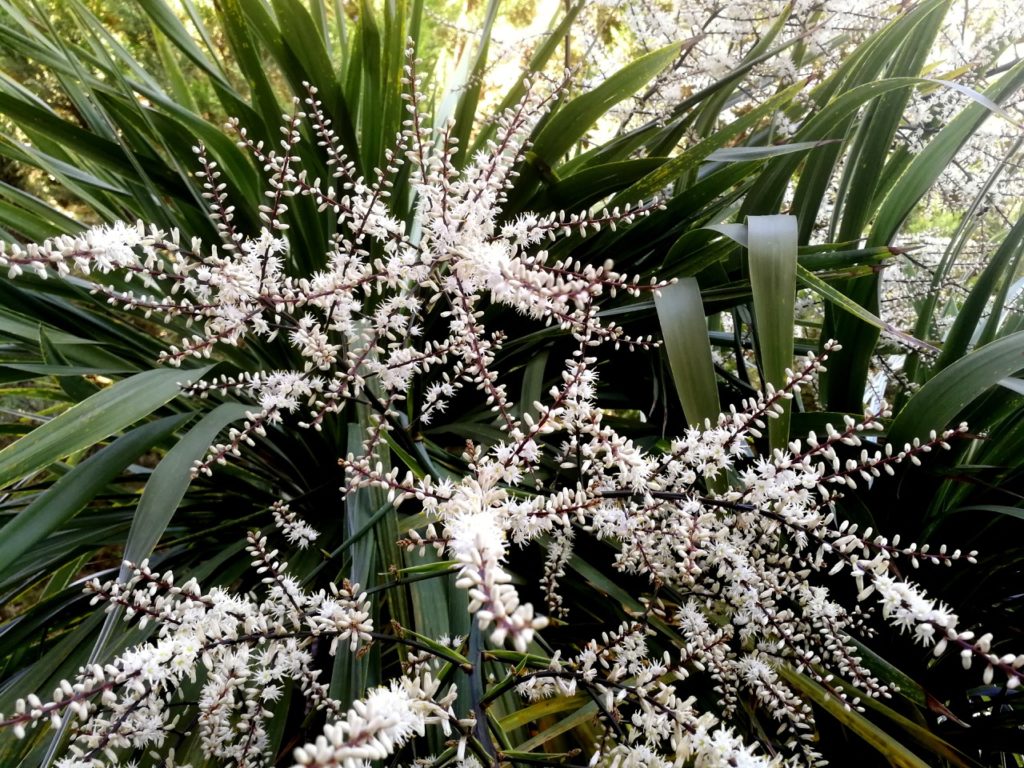
- COMMON NAME(S): mountain cabbage tree
- FOLIAGE: blue and green
- FLOWERS: white
- FLOWERING SEASON(S): summer
- SIZE: 2.5-4m in height, 1-1.5m spread
C. indivisa can reach a height of nearly 4m.
The mountain cabbage tree’s foliage is very special in its own right as though the leaves are a solid tone, that tone is a distinctly bluish hue of green.
Also, its sword-shaped leaves are relatively broad, measuring 20-30cm, and display a prominent dusky midrib.
It produces clusters of tiny white flowers followed by purple berries.
3) C. australis ‘Atropurpurea’
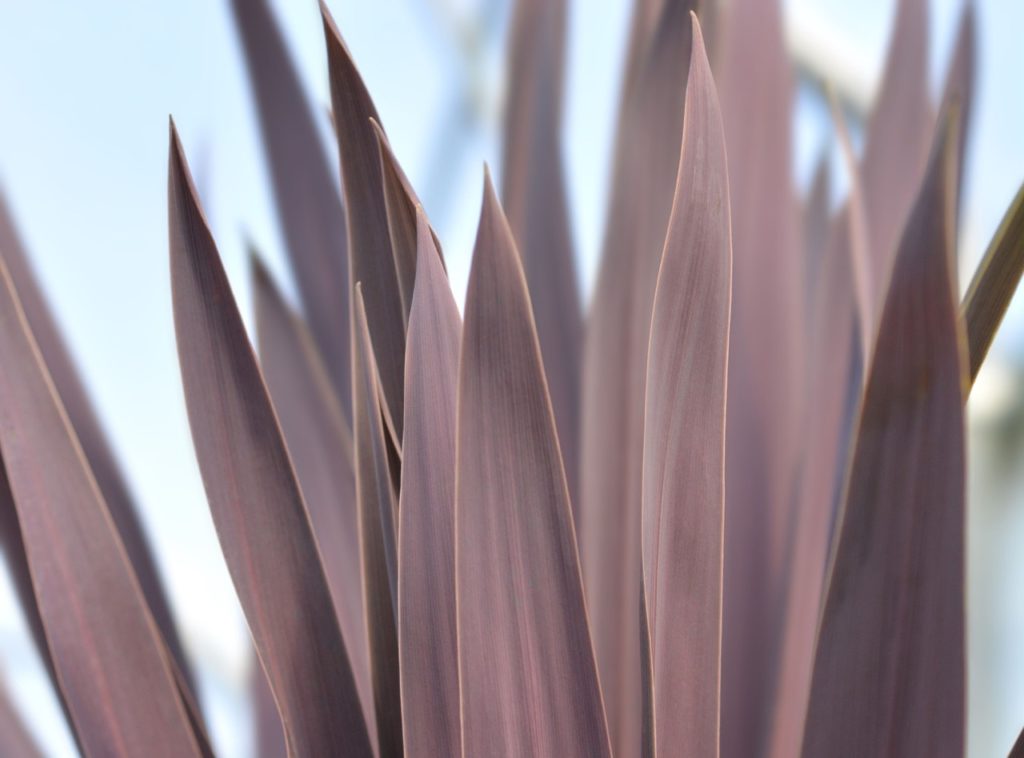
- COMMON NAME(S): cabbage palm ‘atropurpurea’
- FOLIAGE: bronze and purple
- FLOWERS: cream
- FLOWERING SEASON(S): summer
- SIZE: 4-8m in height, 2.5-4m spread
One of the more architectural varieties because of its size and shades, ‘Atropurpurea’ can reach heights of 6m and more.
Many of its stiff, sword-shaped leaves are yellowish-green, but quite a number are of a purplish bronze tone, for they undergo colour shifts as they age and as the seasons change.
It is used as an architectural plant both outdoors and indoors; as a houseplant, it is pruned whereas outdoors it can be allowed to attain its natural height near walls or structures.
It produces tiny creamy flowers in the summer.
4) C. australis ‘Red Star’

- COMMON NAME(S): cabbage palm ‘red star’
- FOLIAGE: cream, red and bronze
- FLOWERS: cream and white
- FLOWERING SEASON(S): summer
- SIZE: 2.5-4m in height, 1.5-2.5m spread
One of the not-so-big C. australis cultivars, ‘Red Star’ can reach a height of 3m but can be kept sufficiently compact when grown in a container.
It is also an excellent choice for an elegantly understated border.
That’s because its narrow strap-like leaves fan out and are of a dull, coppery red colour that is accented by yellow and cream stripes and tips.
5) C. australis ‘Torbay Dazzler’
- COMMON NAME(S): cabbage palm ‘torbay dazzler’
- FOLIAGE: green and white
- SIZE: 2.5-4m in height, 1-1.5m spread
The aptly-named ‘Torbay Dazzler’ is just that.
It grows to only about 3m with a relatively narrow spread.
The 60cm leaves are also similarly narrow, making it among the most ribbony of cordylines.
These lanky ribbons are dazzlingly variegated and longitudinally striped.
The cool green middle is centred with a line of rust-red and bordered by white and cream.
6) C. australis ‘Albertii’
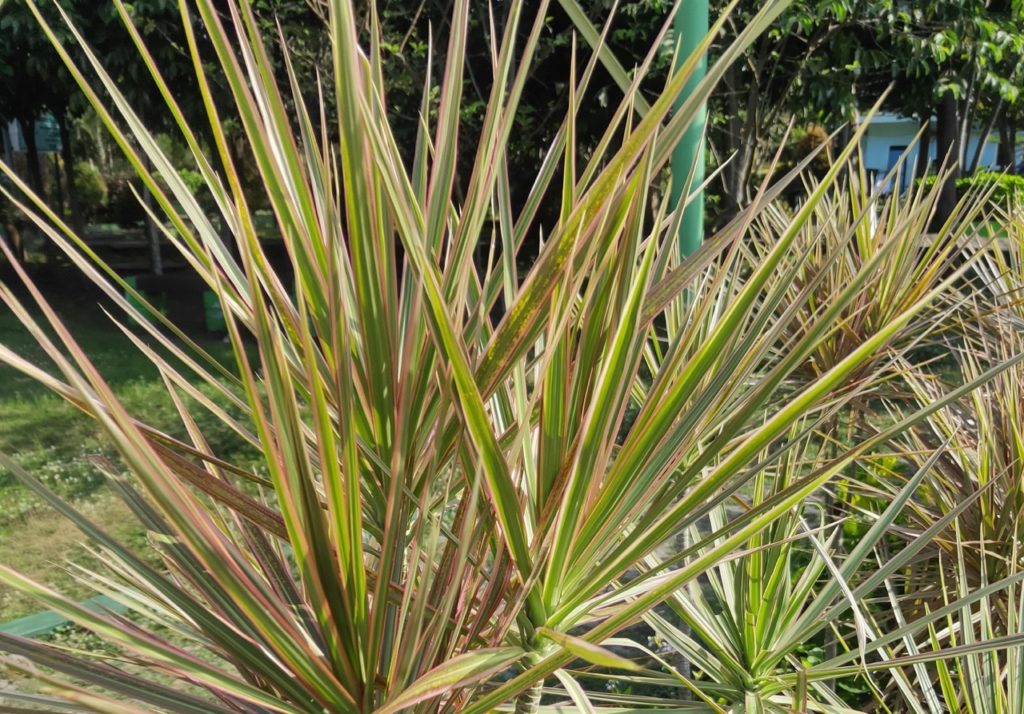
- COMMON NAME(S): cabbage palm ‘albertii’
- FOLIAGE: green, yellow and pink
- FLOWERS: white
- FLOWERING SEASON(S): summer
- SIZE: 4-8m in height, 2.5-4m spread
A larger model, ‘Albertii’ can eventually hit 6m or so and develop a proper trunk.
It may also produce proper branches that grow from scimitar-like narrow leaves that are densely packed and feature attractive, relatively thick yellow edging.
Emerging leaves add further colour as they have a pinkish flush.
Mature trees bear tiny white flowers in summer.
7) C. ‘Southern Splendour’
- COMMON NAME(S): cabbage palm ‘southern splendour’
- FOLIAGE: pink and green
- FLOWERS: pink and white
- FLOWERING SEASON(S): summer
- SIZE: 2.5-4m in height, 1-1.5m spread
An atypical C. australis, ‘Southern Splendour’ is not so much cool as it is vibrant and warm, at least relatively speaking.
Eventually forming a little tree of around 3m, this cultivar’s ribbony arcing leaves have a dusky green base with fine lengthwise stripes and lines in pink-red, slate red, cream and orange.
This cultivar makes a terrific container specimen.
8) C. australis ‘Red Sensation’

- COMMON NAME(S): cabbage palm ‘red sensation’
- FOLIAGE: bronze
- FLOWERS: cream
- FLOWERING SEASON(S): summer
- SIZE: 4-8m in height, 2.5-4m spread
One of the largest options, ‘Red Sensation’ rises to 6m and can grow taller.
It rarely branches out, preferring to shoot upwards.
Its stiff, sword-shaped leaves are a very deep bronzy-purple.
In summer, there is floral interest as this cultivar bears copious quantities of tiny cream-coloured flowers in thick clusters.
9) C. fruticosa ‘Red Edge’
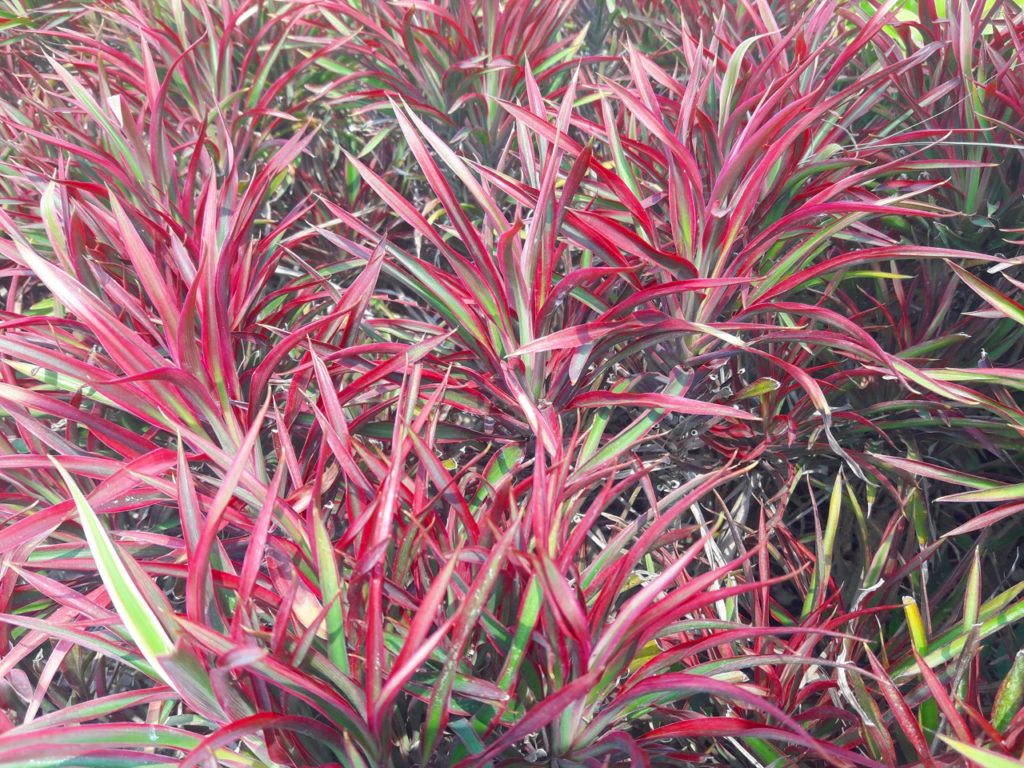
- COMMON NAME(S): cabbage palm ‘red edge’
- FOLIAGE: red, white and green
- SIZE: 1-1.5m in height, 0.1-0.5m spread
Growing a touch over 1m tall, ‘Red Edge’ makes a wonderful houseplant, but is not suited to life outdoors.
The elliptical-to-lanceolate leaves are a classic leafy green with fine white striping and red bordering and are often quite thick.
The particular shade of red is very appealing and bright, yet soft.
10) C. ‘Cha Cha’

- COMMON NAME(S): cabbage palm ‘cha cha’
- FOLIAGE: green, bronze and cream
- SIZE: 2.5-4m in height, 1.5-2.5m spread
Though it does not descend from C. fruticosa, ‘Cha Cha’ is perfect for a houseplant or patio plant, reaching up to 2m in height.
The lily-like leaves are long and narrow and the outer ones arc and sway very appealingly.
Young leaves have a bronze tone while mature leaves are brilliantly variegated in stripes of cool green and bright yellow.
11) C. fruticosa ‘Kiwi’
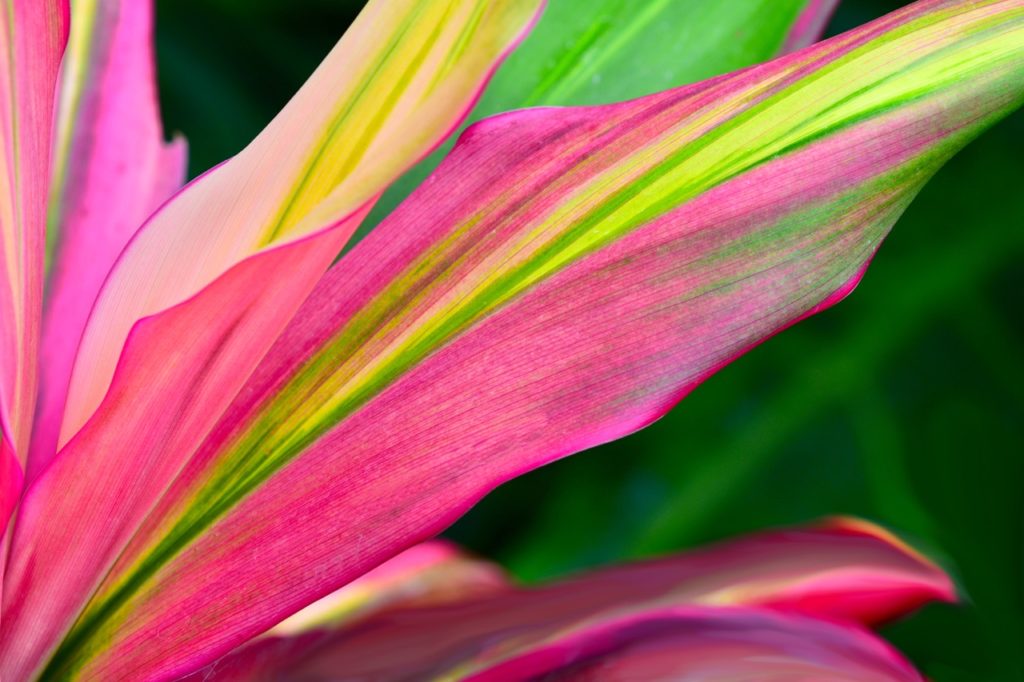
- COMMON NAME(S): cabbage palm ‘kiwi’
- FOLIAGE: green, pink and yellow
- SIZE: 1-1.5m in height, 0.5-1m spread
Rising to just over 1m and a popular houseplant, ‘Kiwi’ is an evergreen with a laid-back charm.
That’s because its lanceolate leaves are in shades of light and bright green, merging and melding with pastel and bright yellows with a touch of pink at the margins.
For me, this is the most gentle and soothing choice if that is what you want for your indoor spaces.
12) C. fruticosa ‘New Guinea Black’
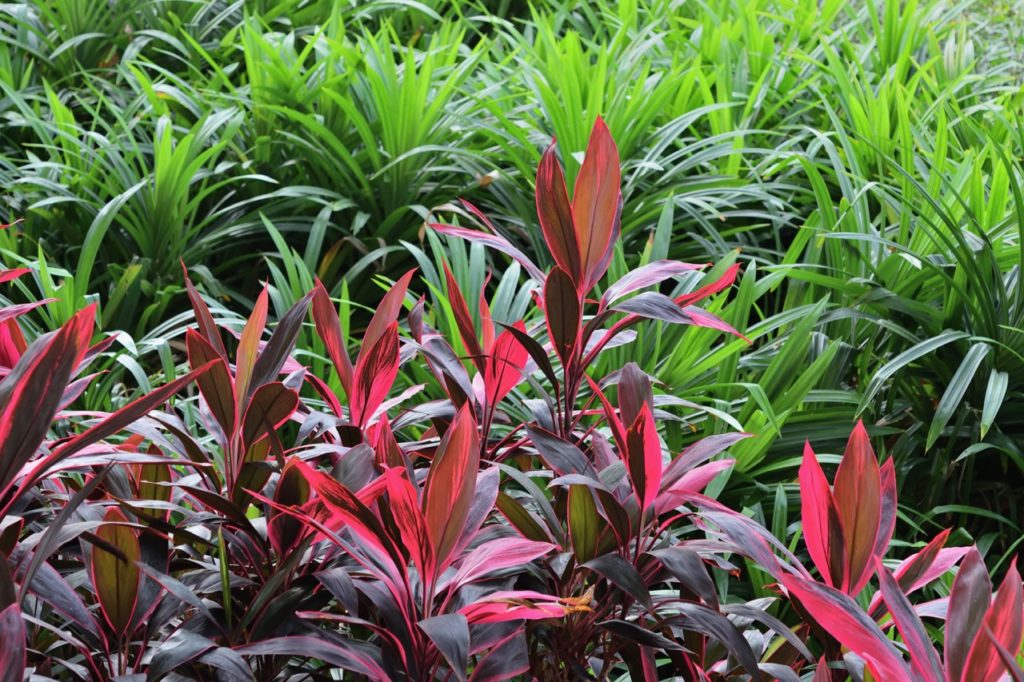
- COMMON NAME(S): cabbage palm ‘new guinea black’
- FOLIAGE: black and purple
- SIZE: 1.5-2.5m in height, 1-1.5m spread
Among the most striking of the cordyline houseplants, ‘New Guinea Black’ is a serious decor play.
That’s because this cultivar has a relatively narrow spread and its lanceolate foliage is essentially black, whilst the leaves display gradations of forest green, deep purple, and black.
13) C. fruticosa ‘Amabilis’

- COMMON NAME(S): cabbage palm ‘amabilis’
- FOLIAGE: bronze, white and pink
- SIZE: 1-1.5m in height, 0.5-1m spread
Also growing to a little over 1m, what makes ‘Amabilis’ a bit different is its relatively broader leaves, which appear as if they have been painted, for on the very light green background one sees streaks, strokes, and daubs of pinkish red in shades from pastel to bright.
Ideal for an artist’s studio or creative space!
14) C. fruticosa ‘Rumba’

- COMMON NAME(S): cabbage palm ‘rumba’
- FOLIAGE: green, red and pink
- SIZE: 1-1.5m in height, 0.5-1m spread
One of the newer cultivars, ‘Rumba’ is one of the bushier varieties and has abundant lanceolate foliage.
The colour is an unusually deep and smoky green set off with rust-red tones and flushes.
The final touch is a bright pink edge running around the leaves and often extending to their stalks.
15) C. fruticosa ‘Firebrand’

- COMMON NAME(S): cabbage palm ‘firebrand’
- FOLIAGE: pink and purple
- SIZE: 1-1.5m in height, 0.1-0.5m spread
Probably taller than the other cultivars and able to rise to 2m with a bushy habit, ‘Firebrand’ breaks the cool mould and is a comparatively intense option.
The lanceolate foliage is of a wonderfully deep, smoky purple maroon on the older leaves while the newer leaves are a popping shade of burgundy.
16) C. banksii ‘Electric Pink’

- COMMON NAME(S): cabbage palm ‘electric pink’
- FOLIAGE: gold and pink
- SIZE: 1-1.5m in height, 0.5-1m spread
Forming clumps and tufts of long and narrow strap-like arcing leaves, ‘Electric Pink’ lives up to its name and is surely an outlier among the smaller cordylines because of its vivid hues.
Leaves are a deep smoky reddish-green along the centre but are truly an electric shade of red-pink along the edges, as are the newer leaves.
This variety attains a height of about 1.5m.
Lesser-known cordyline plants worth a look are:
17) C. petiolaris

18) C. congesta
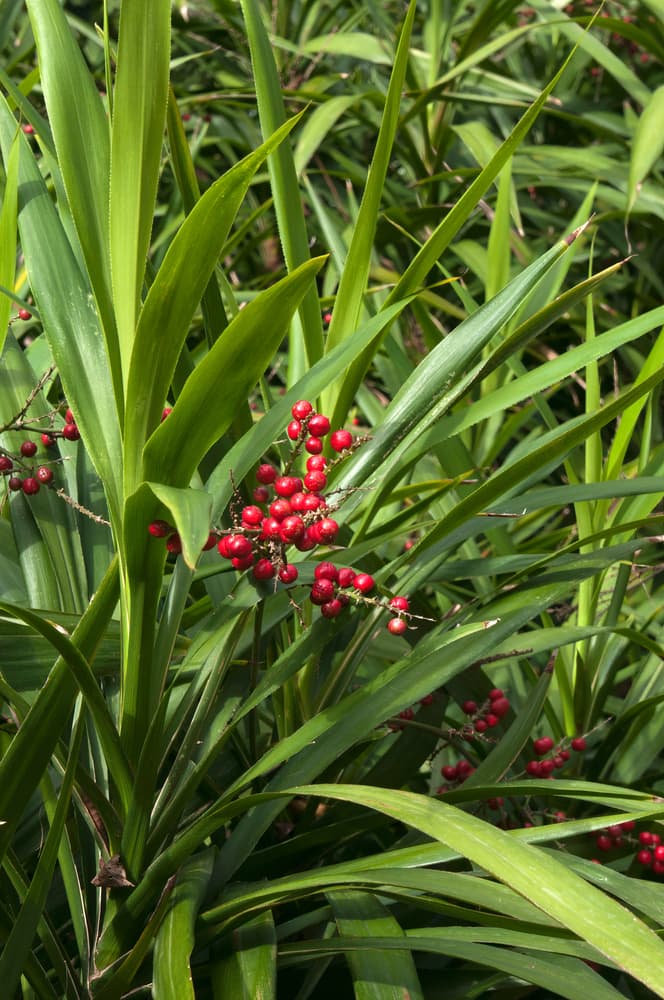
References
- 1Part VIII — The Genus Cordyline. (n.d.). Maori Agriculture. Retrieved March 14, 2023, from https://nzetc.victoria.ac.nz/tm/scholarly/tei-BesAgri-t1-body-d8.html

